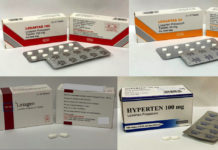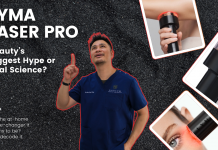 Bad news for all of us who pop painkillers for aches and pains. New Research has shown that the use of nonsteroidal anti-inflammatory drugs (NSAIDs) is associated with a significantly increased risk of myocardial infarction (heart attack).
Bad news for all of us who pop painkillers for aches and pains. New Research has shown that the use of nonsteroidal anti-inflammatory drugs (NSAIDs) is associated with a significantly increased risk of myocardial infarction (heart attack).
What Are NSAIDs?
NSAIDs are are class of drugs which reduce pain, fever and inflammation. They are stronger than acetaminophen (Panadol/ Paracetamol), and work by inhibiting enzymes (COX I and COX II), in turn reducing the bio-chemicals in the body which produce symptoms of pain, inflammation and fever (prostaglandins and thromboxanes).
The most common NSAIDs include:
Aspirin
Mefanemic Acid (Ponston)
Naproxen (Synflex)
Diclofenac Acid (Voltaren)
Ibuprofen (Brufen)
Newer NSAIDS (the COX II inhibitors), which cause less gastric side effects include:
Celecoxib (Celebrex)
Etoricoxib (Arcoxia)
Refecoxib (Vioxx) – discontinued
NSAIDs Side Effects Have Long Been Known
Despite being such a commonly used drug, NSAIDs are notorious for some side effects, the most common being gastric bleeding and ulcers. These can be catastrophic and even cause death. The newer COX II inhibitors have less gastric side effects through selective inhibition of COX II rather than both COX I and COX II.
The other serious side effect associated with with NSAIDs is heart attack and stroke. In 2014, the highly popular Vioxx was voluntarily withdrawn from the market by Merck & Co. after a study showed that patients taking the drug on a long-term basis face twice the risk of a heart attack compared with patients receiving placebo.
Other NSAIDs, aside from Aspirin, are also associated with increased heart attack and stroke risk. Naproxen was thought to be the safest of the lot, until now.
New Study Confirms ALL NSAIDs Increase Heart Attack Risk
A new meta-analysis confirms our worst fears – that NSAIDs indeed increase our risk of heart attack. The increased risk occurred as early as the first week of use and the risk was greater with higher doses.
“Taking any dose of NSAIDs for one week, one month, or more than a month was associated with an increased risk of myocardial infarction. Greater risk of myocardial infarction was documented for higher dose of NSAIDs. With use for longer than one month, risks did not appear to exceed those associated with shorter durations.” – extracted from the paper.
Comparing the different NSAIDs, celecoxib (Celebrex) increased heart attack risk to the same degree as traditional NSAIDs.
Can We Still Take NSAIDs Painkillers Safely?


















